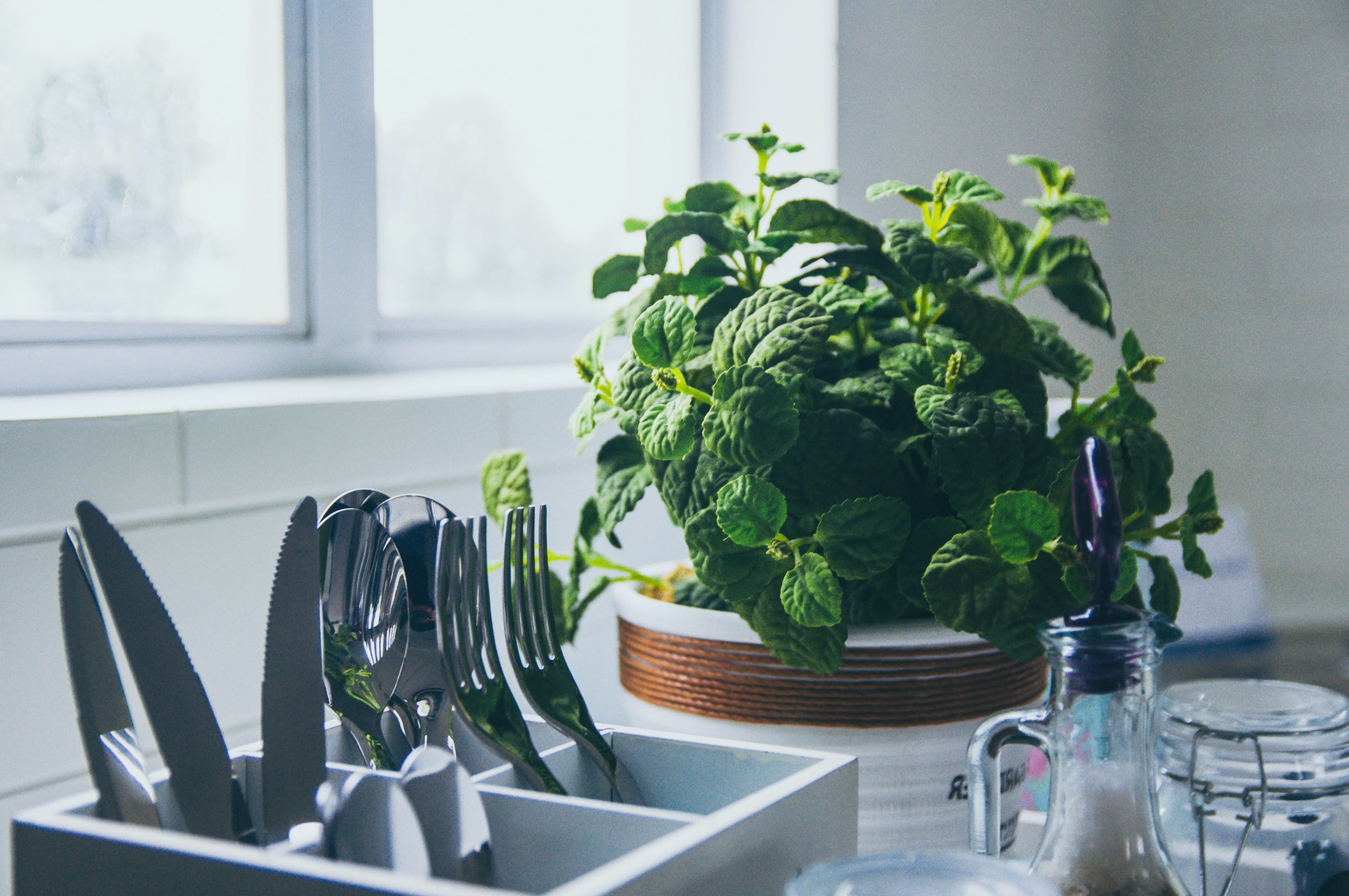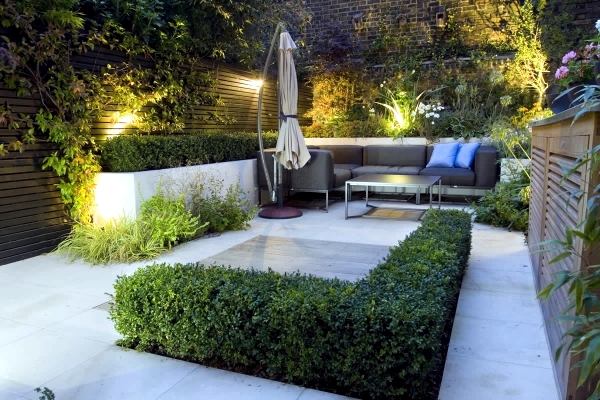Gardening can be as complex or as easy as you like. Last year in March, my roommate and I started growing our own herbs on our windowsill since our New York apartment doesn’t have enough space for a real garden. You can also create a community garden on the roof of your house with your neighbors.
Herbs are also a great way to bring color to your plate and a great way to distract yourself in these challenging times we live in. So, without further ado, let’s dive into this blog and learn how to create your own flourishing interior herb garden.
1. The right spot
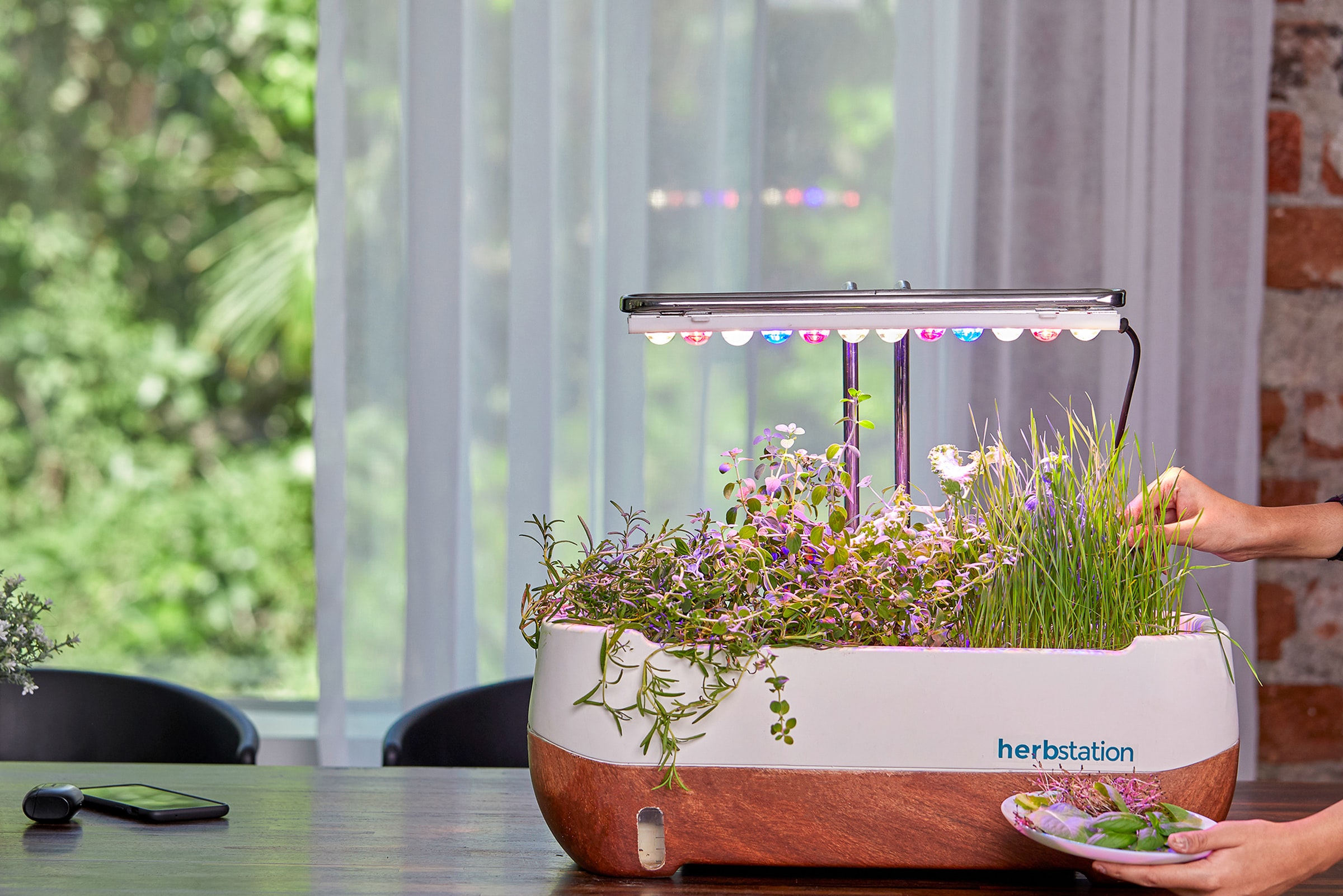
Choose somewhere in your kitchen or apartment that receives a lot of natural sunlight. Herbs, or plants in general for that matter, love the sun. Without enough natural sunlight, your plant will grow tall and straggly and will only produce limp stems. And we don’t want limp stems (for plants or anything else for that matter).
To have a flourishing kitchen herb garden, you need to place them near your windowsill as this is the place where they will receive the most natural sunlight. Your herbs will require a minimum of 4 hours of sunlight daily to grow strong and healthy. For a healthy and even grow, turn your pot 180 degrees every 2 days or so.
If you live somewhere with a rainy and cloudy disposition, we advise looking into supplement lights. They let you nurture your kitchen herb garden when you live somewhere with minimum sunny spots. You can find a grow light kit in any gardening store near you, and this usually retails for 100 to 200 dollars.
2. Watering
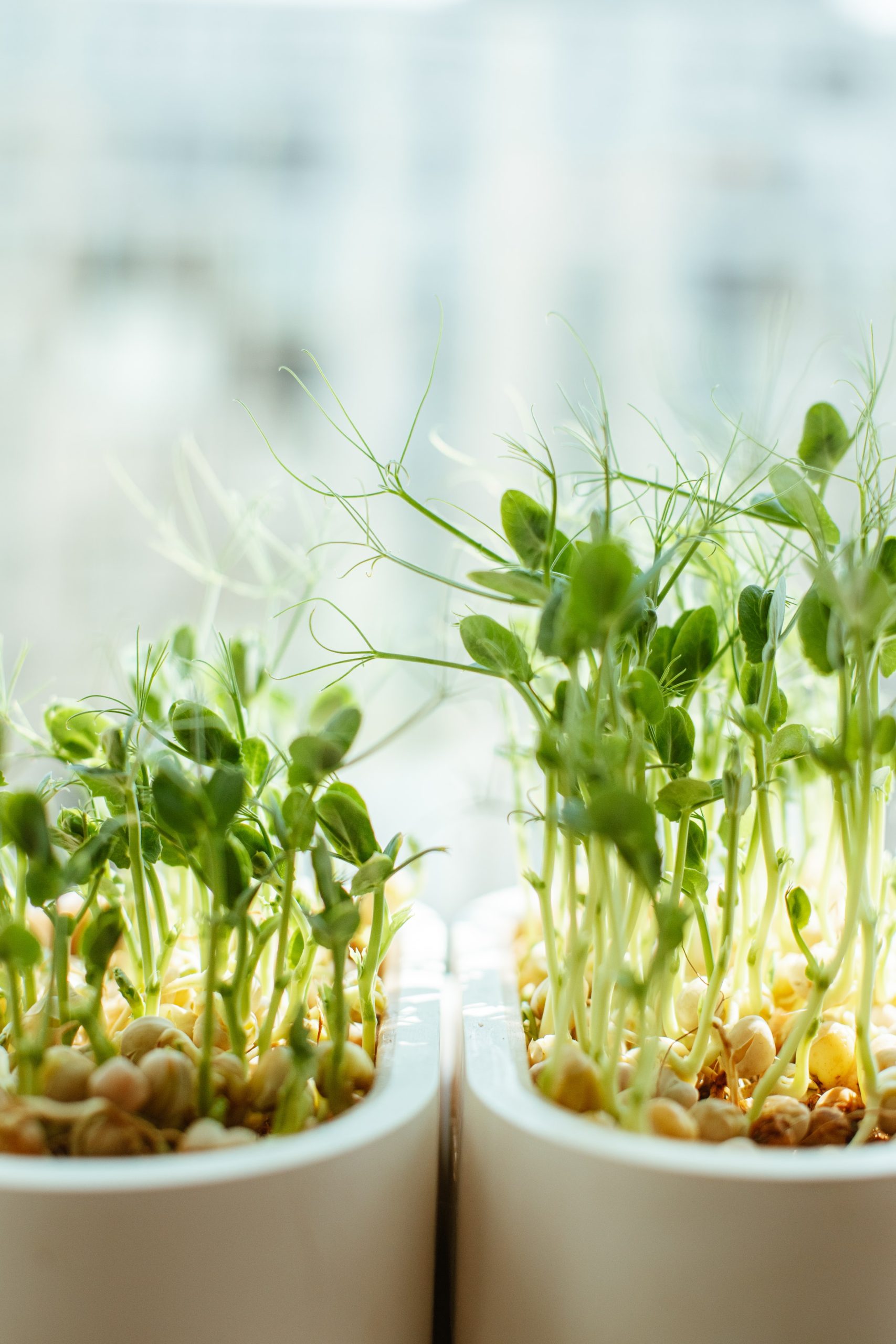
One thing that most people get wrong is how often to water your plants, and the answer for this depends on your plant itself, but a general rule of thumb is that as long as the surface soil is humid, you don’t need to water it. Overwatering is a real issue that not enough people talk about, and it can lead the roots of your plants to root over time.
Watering them once a week should do the work as most herbs prefer a damp and not too soggy condition to thrive. Give them enough water that a little excess comes out of the drainage system. This way, you know that the plant is hydrated throughout.
Because these are indoor plants, they can get dry easier, especially in a temperature-controlled home. Heated winter air is one such issue because it is arid, and it might cause the plant to wilt. This is why you need to mist or spray the foliage lightly during this time. Two to three times a day, so do it.
3. Drainage
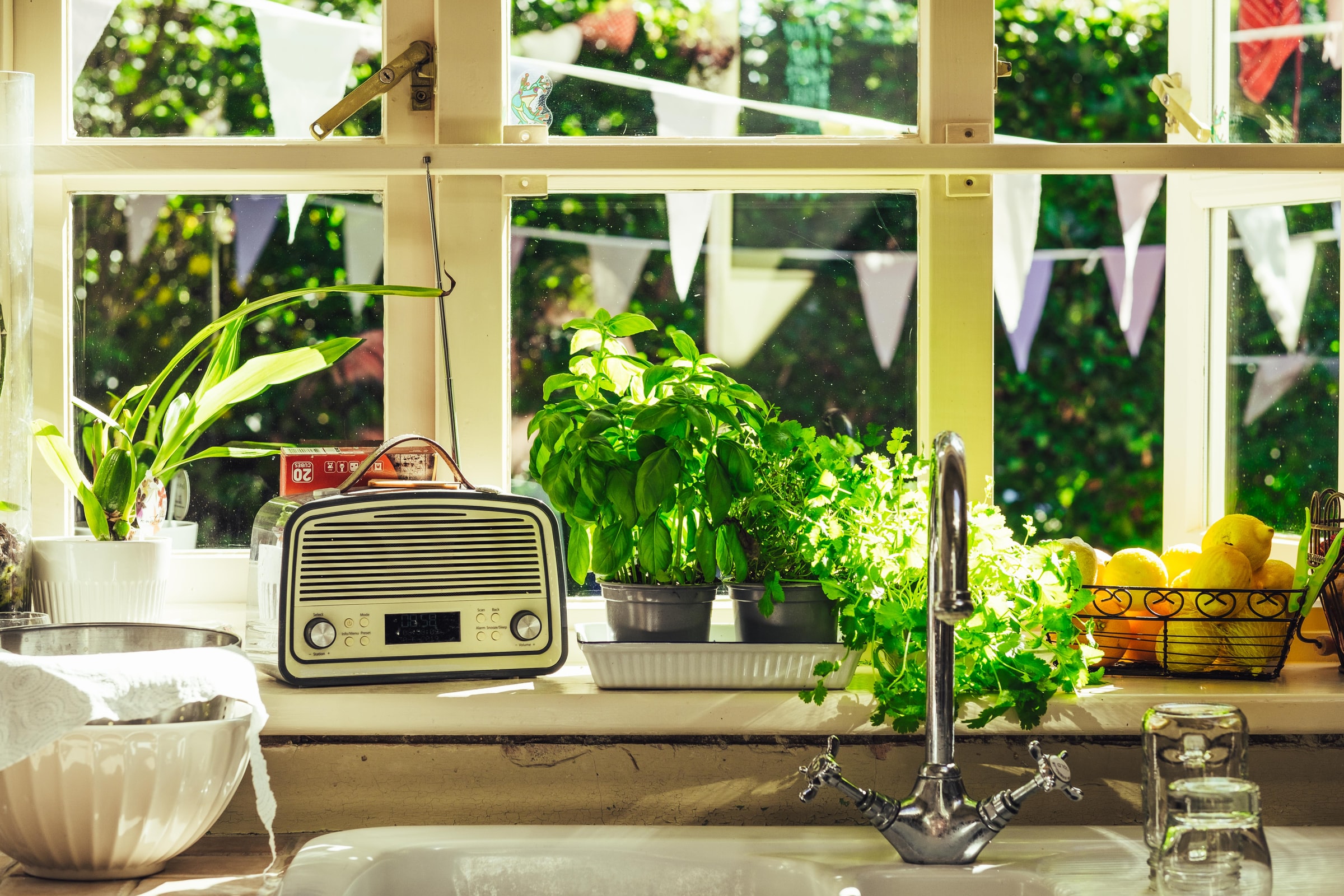
Even though they will be in your kitchen, you need to make sure that your potted herbs have a good drainage system. Overwatering and inadequate drainage is a sure-fire way for you to kill your plants, as this can lead to the creation of fungi over time. Make sure you buy pots that have holes at the bottom, or you can make the wholes yourself (be careful if you are doing this).
4. Grow your favorite herbs and dwarf varieties
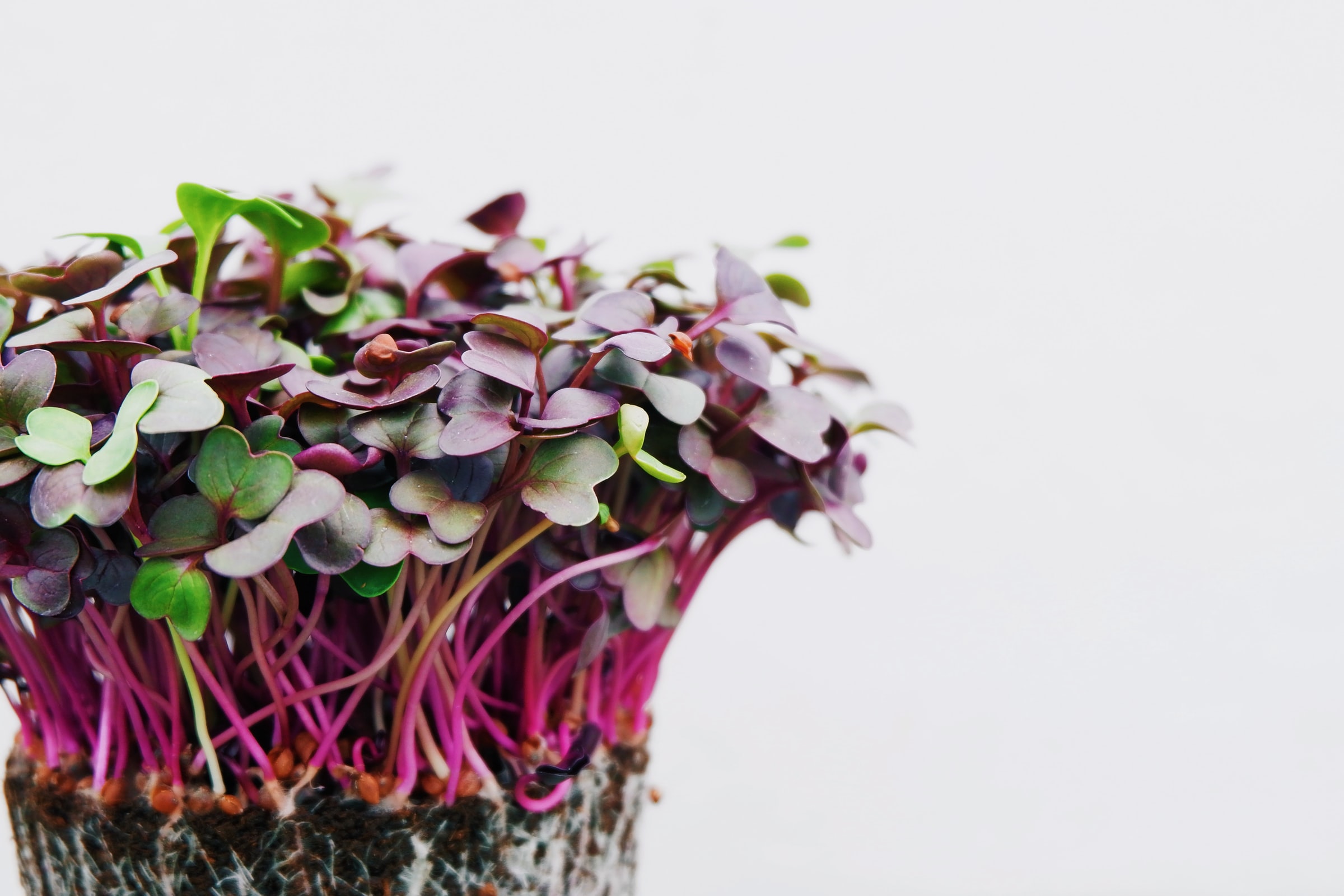
Don’t just grow any herb, but rather grow ones that you know you will use, and doing the former would be a bit redundant. We are saying this because you will need to regularly harvest them to keep them in good shape and healthy. Some of the easiest to grow herbs out there are thyme, rosemary, chives, and even cilantro, and they are some of the best herbs for giving your dish a pop of color.
Let’s be honest, your kitchen is already pretty small, and I can talk from experience here; I have lived in one of the boroughs of New York all my life (I currently live in a Condo In Manhattan with my partner), and let me tell you kitchen are pretty small here. This is why you might want to look into dwarf varieties of herbs and microgreens.
The advantage of dwarf varieties of the herb is that they take even less space and have the same taste and purpose as their larger counterparts. They make your living area more efficient, and you are using all the space available to you.
Sound off in the comments section below and tell us what you want to read next and if you want to read more about having a kitchen herb garden.

